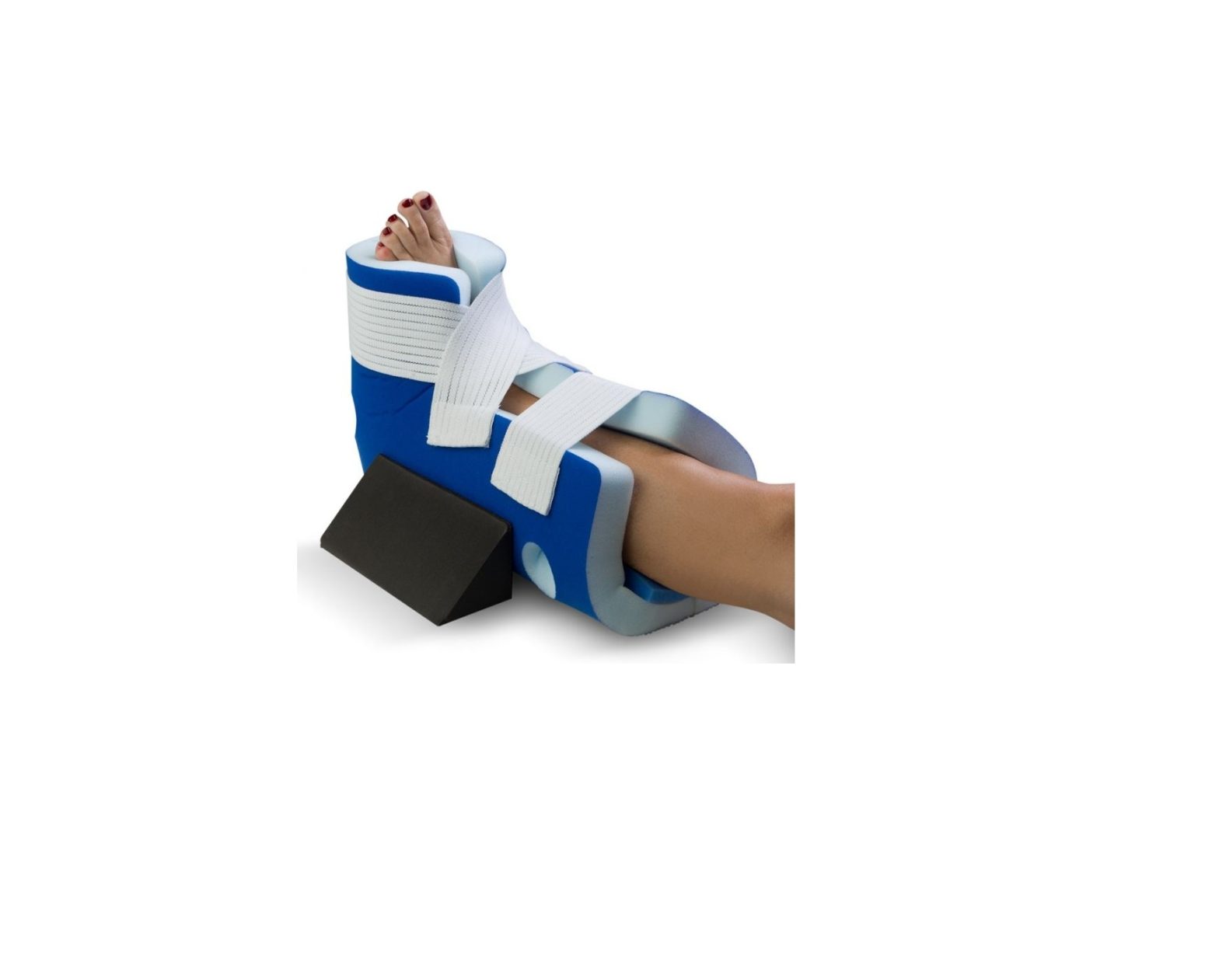DJO PROCARE Heel Relief Boot Instructions
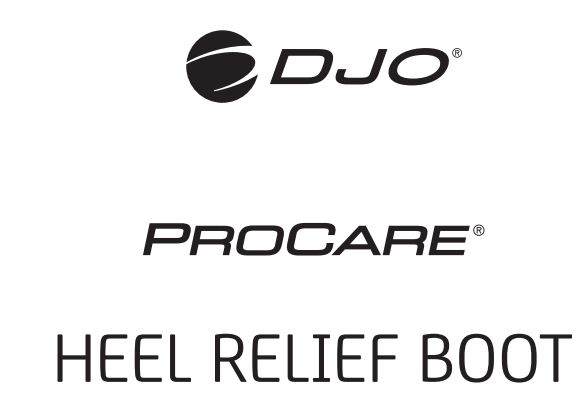
BEFORE USING THE DEVICE, PLEASE READ THE FOLLOWING INSTRUCTIONS COMPLETELY AND CAREFULLY. CORRECT APPLICATION IS VITAL TO THE PROPER FUNCTIONING OF THE DEVICE.

INTENDED USER PROFILE:The intended user should be a licensed medical professional, the patient, the patient’s caretaker, or a family member providing assistance. The user should be able to: Read, understand and be physically capable to perform all the directions, warnings and cautions provided in the information for use
INTENDED USE/INDICATIONS:The ProCare Heel Relief Boot is designed to provide protection to the heel. It may be suitable for the prevention of heel pressure ulcers. Providing mild protection of a limb or body segment for acute and prophylactic care.
CONTRAINDICATIONS:Not recommended for patients with severe ankle contractures, severe spasticity or severe foot drop. Do not use if you are allergic to any of the materials contained in this product.
WARNINGS AND PRECAUTIONS:
- Neoprene supports should not be worn by individuals with known susceptibility to dermatitis or allergies to neoprene by-products.
- If you develop an allergic reaction and/or experience itchy, red skin after coming into contact with any part of this device, please stop using it and contact your healthcare professional immediately.
- If pain, swelling, changes in sensation or other unusual reactions occur while using this product, you should contact your doctor immediately.
- Do not use over open wounds.
- Do not use this device if it was damaged and/or packaging has been opened.NOTE:
- The Heel Relief Boot is to be used on patients with intact skin only.
- Contact manufacturer and competent authority in case of a serious incident arising due to usage of this device.
APPLICATION INFORMATION:
- Release all hook and loop straps and open boot.Note: Extra foam wedge is included as needed for Anti-Rotation.
- Place the patient’s foot into the boot. Make sure the patient’s heel is placed over the heel opening (Fig. A).



- Take one of the straps located under the forefoot and bring it over the top of the foot and secure to the opposite side of the boot. Take the other strap and cross it over the first strap and secure to the opposite side of boot (Fig. B).

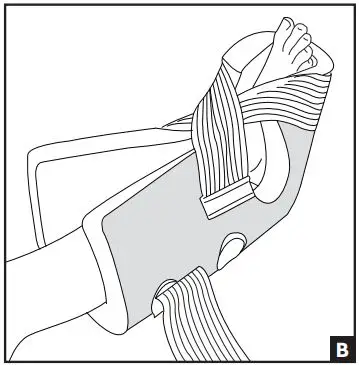
- Secure the lower leg strap on one side of the boot and the other on the opposite side. Make sure all straps are secure but not too tight. (Fig. C).

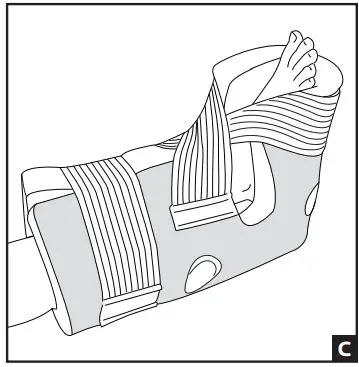
- For Anti-Rotation: To control external hip rotation, place the Velcro/hook side of wedge to the lateral exterior side of boot (Fig. D). Make sure the wedge rests flat on surface of the bed.
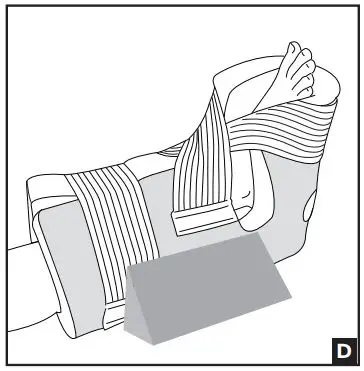

NOTE: Periodically visually check to ensure heel is suspended over the heel opening. If sequential or intermittent compression devices are used for prevention of Deep Vein Thrombosis (DVT) while using the Heel Relief Boot, make sure tubing is not bent or in contact with
NOTE:If product becomes contaminated with bio-hazardous material or at conclusion of treatment, dispose of in accordance with local regulations.
NOTE: DO NOT allow patient to stand or walk while wearing the Heel Relief Boot.
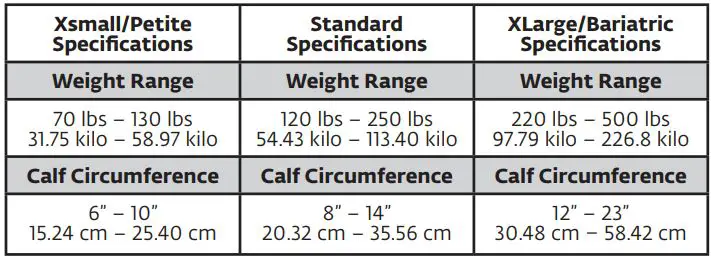

CLEANING INSTRUCTIONS:
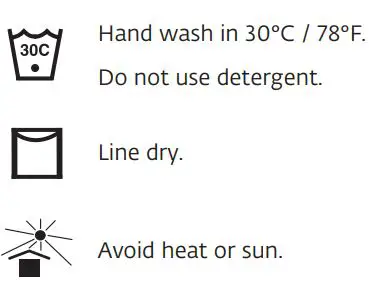

MATERIAL CONTENT: Nylon, Foam (Polyurethane).
WARRANTY: DJO, LLC will repair or replace all or part of the unit and its accessories for material or workmanship defects for a period of six months from the date of sale. To the extent the terms of this warranty are inconsistent with local regulations, the provisions of such local regulations will apply.
FOR SINGLE PATIENT USE ONLY.
![]()
![]()
NOTICE: WHILE EVERY EFFORT HAS BEEN MADE IN STATE-OF-THE-ART TECHNIQUES TO OBTAIN THE MAXIMUM COMPATIBILITY OF FUNCTION, STRENGTH, DURABILITY AND COMFORT, THERE IS NO GUARANTEE THAT INJURY WILL BE PREVENTED THROUGH THE USE OF THIS PRODUCT.


![]()
![]()
MDSS GmbHSchiff graben 4130175 Hannover, Germany
DJO, LLC1430 Decision StreetVista, CA 92081-8553 • USA
[xyz-ips snippet=”download-snippet”]

